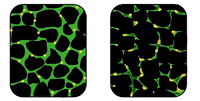
Photo from wikipedia
BACKGROUND Duchenne muscular dystrophy (DMD) is the most frequent genetic neuromuscular disease in childhood with loss of ambulation usually occurring around the age of 9-11 years. OBJECTIVE, MATERIAL AND METHODS Based… Click to show full abstract
BACKGROUND Duchenne muscular dystrophy (DMD) is the most frequent genetic neuromuscular disease in childhood with loss of ambulation usually occurring around the age of 9-11 years. OBJECTIVE, MATERIAL AND METHODS Based on current guidelines and clinical trials, neuropediatric and neurological experts developed recommendations for the treatment of nonambulatory DMD patients focusing on drug treatment of adults. This advisory board was sponsored by PTC Therapeutics, the distributers of the substance ataluren. RESULTS AND CONCLUSION Loss of ambulation is heterogeneously defined across clinical trials. Among others, the need of a wheelchair, ambulation without mobility aids or maximum walking distance can be suitable parameters for assessment. Treatment of DMD patients at any stage of the disease is based on supportive and symptomatic measures, which should be continued after loss of ambulation. In addition, disease-modifying drugs are available for the treatment of DMD and glucocorticoids are the usual standard of care treatment even beyond the loss of ambulation. Ataluren, a potentially dystrophin restorative, disease-modifying treatment, has been approved for patients with DMD due to a nonsense mutation (nmDMD), which applies to approximately 13% of DMD patients and is usually combined with steroids. Clinical data from the STRIDE registry demonstrated a delayed disease progression even after loss of ambulation. Currently, no reliable data are available for exon skipping approaches in adult DMD patients. The antioxidant idebenone could be an option in nonambulant adolescent patients not treated with glucocorticoids and without other therapeutic options. A combination treatment of idebenone and glucocorticoids is currently being investigated in a clinical trial. Add-on treatment with idebenone in addition to ataluren may be considered for nonambulant nmDMD patients. Some of the discussed treatment options are still in clinical trials or there are not enough data for older DMD patients; therefore, these expert recommendations correspond to evidence class IV.
Journal Title: Der Nervenarzt
Year Published: 2020
Link to full text (if available)
Share on Social Media: Sign Up to like & get
recommendations!